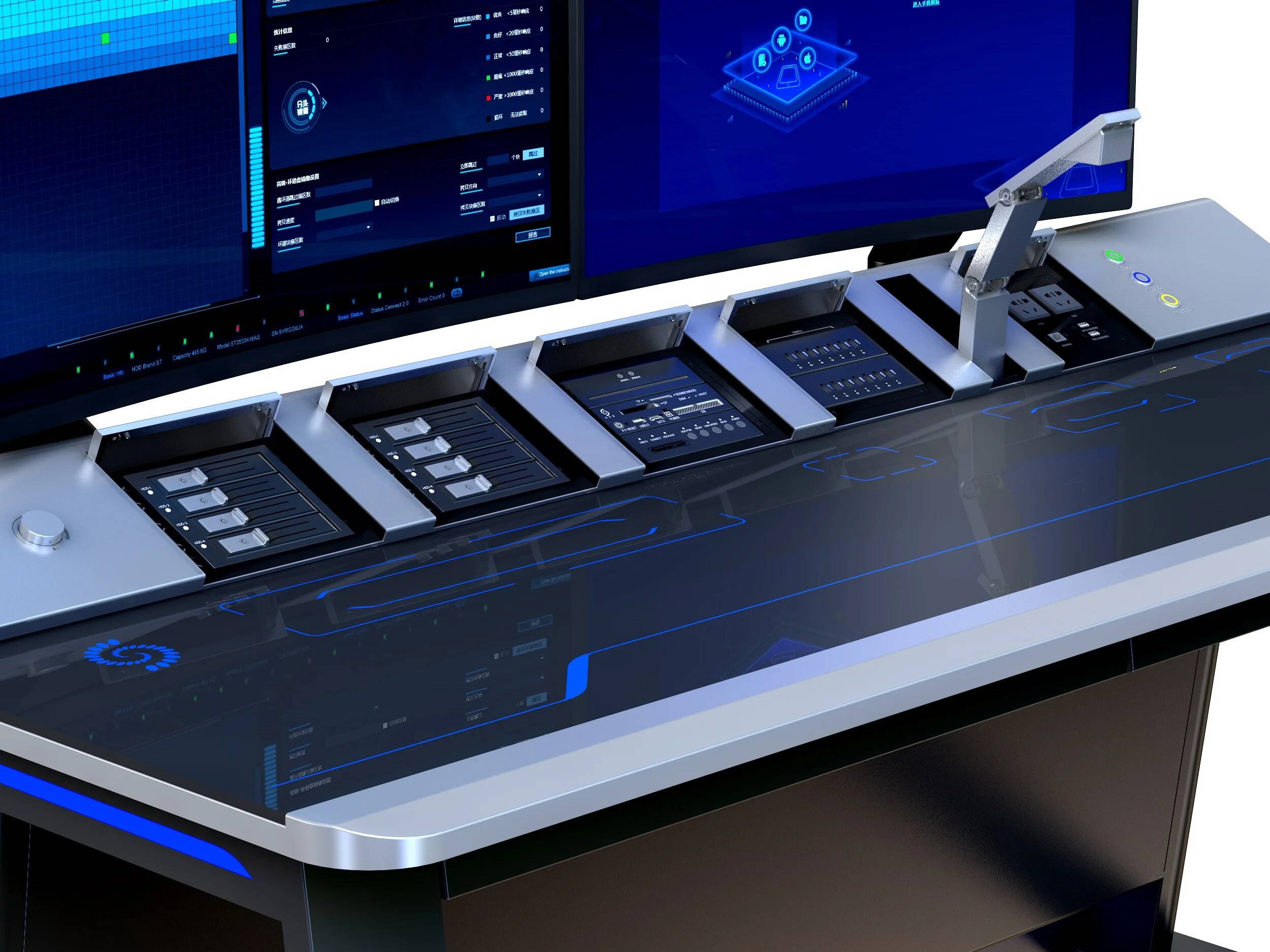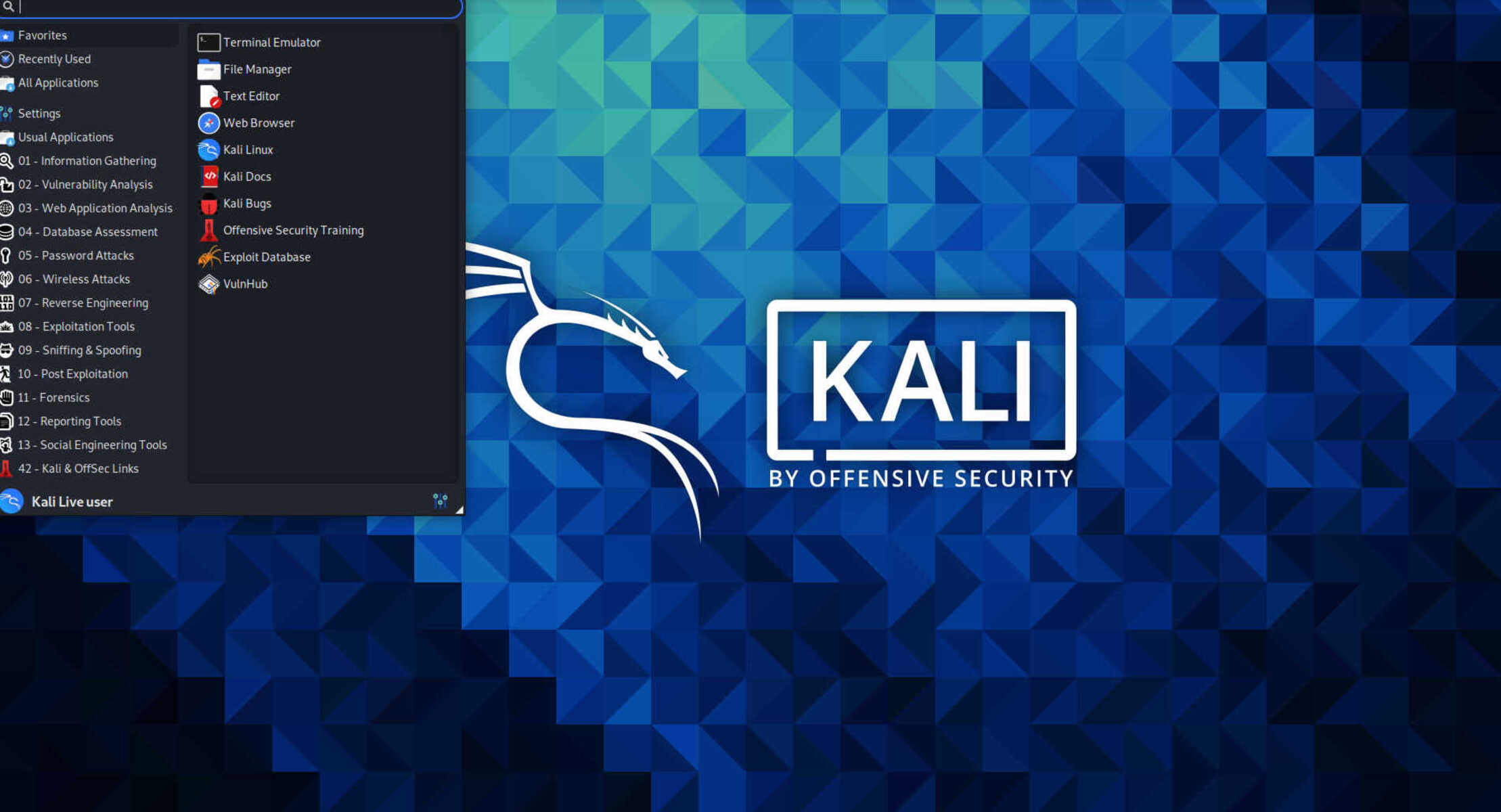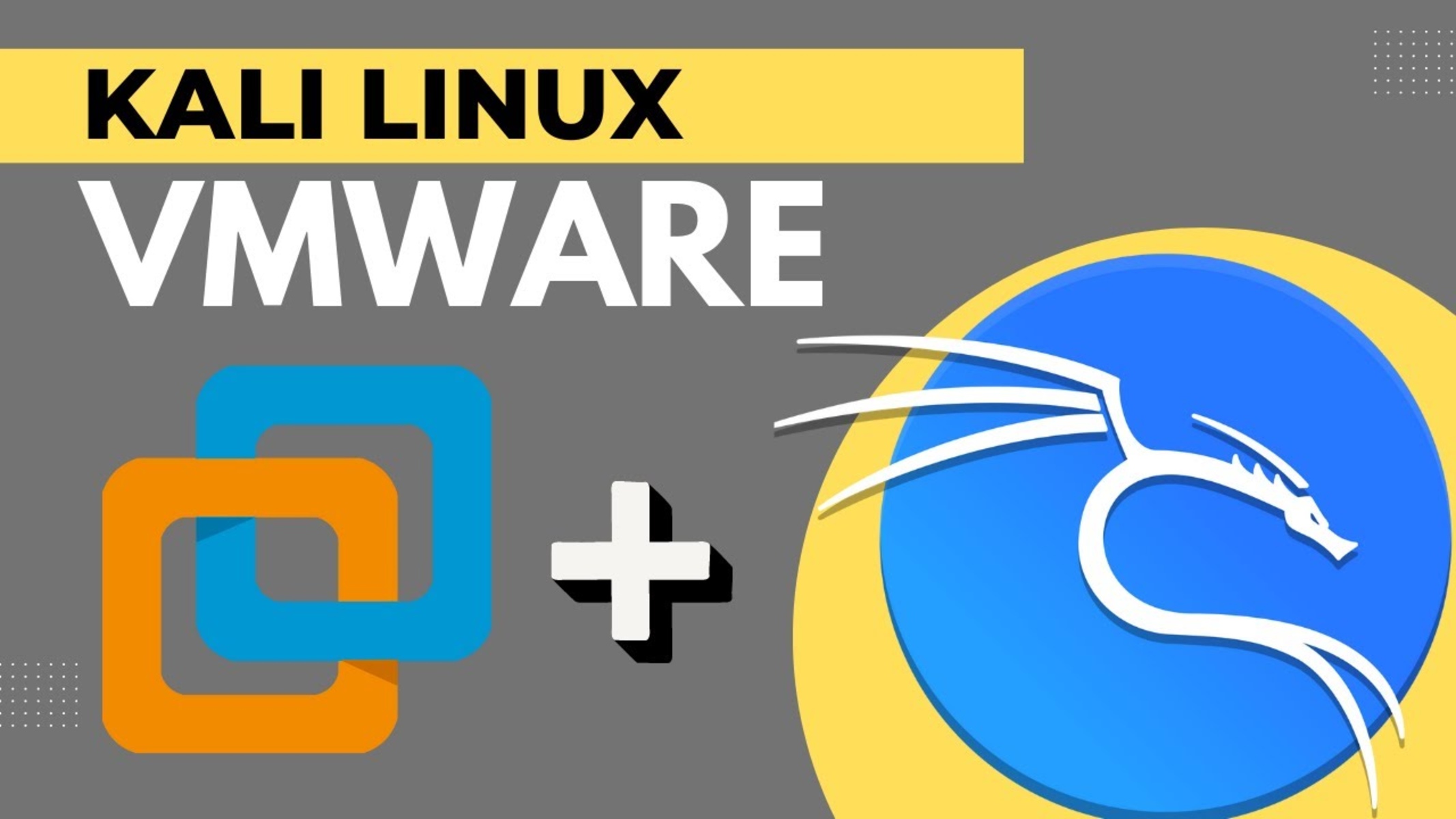Introduction
When it comes to digital forensics, having a reliable and well-equipped workstation is crucial. A good digital forensics workstation is not just a regular computer; it is tailored specifically for the demands of forensic investigations. Whether you are a digital forensics professional, law enforcement officer, or an IT specialist involved in investigations, having the right hardware and software can make all the difference in the success of your work.
Digital forensics involves the examination and analysis of digital devices and data in order to collect evidence for legal proceedings. This can include recovering deleted files, extracting data from mobile devices, analyzing network traffic, investigating cybercrimes, and much more. To carry out these tasks effectively, a digital forensics workstation needs to be powerful, secure, and equipped with the necessary tools and software.
In this article, we will explore the key components of a good digital forensics workstation and discuss the hardware and software specifications that are essential for performing forensic investigations. We will also touch on important security measures that should be implemented to protect sensitive data and ensure the integrity of the investigation process.
Whether you are setting up a new digital forensics lab or upgrading your existing workstation, understanding the requirements and considerations involved will help you make informed decisions. By the end of this article, you will have a clear understanding of what makes a good digital forensics workstation and be better equipped to meet the challenges of forensic investigations.
Hardware Specifications
The hardware specifications of a digital forensics workstation play a crucial role in its performance and capability to handle complex forensic tasks. Here are the key hardware components that should be considered when building or selecting a workstation for digital forensic investigations:
- Processor: A powerful multicore processor is essential for handling the computational demands of forensic software. Look for processors with high clock speeds and multiple cores, such as Intel Core i7 or AMD Ryzen processors.
- RAM: Sufficient RAM is vital for running memory-intensive forensic tools and handling large datasets. Aim for at least 16GB or more to ensure smooth multitasking and efficient data processing.
- Storage: A combination of fast and reliable storage options is recommended. Solid-state drives (SSDs) provide fast data access and boot times, while bulk storage can be handled by cost-effective hard disk drives (HDDs) with large capacities.
- Graphics Card: While a dedicated graphics card may not be crucial for all forensic tasks, it can significantly enhance the performance of graphical-intensive processes, such as password cracking or image analysis. Look for graphics cards with CUDA or OpenCL support.
- Display: A high-resolution and color-accurate display is important for accurately examining and analyzing digital evidence. Consider a monitor with IPS or VA panel technology and a resolution of at least 1920×1080 pixels.
- Connectivity: Ensure that the workstation has ample USB ports, network connectivity options (Ethernet and Wi-Fi), and support for external storage devices or write-blocking devices.
- Power Supply: A robust power supply unit (PSU) with ample wattage is necessary to support the power requirements of the workstation and any additional hardware components.
- Cooling System: Digital forensics workstations can generate significant heat, especially during computationally intensive tasks. Invest in a reliable cooling system, including fans or liquid cooling solutions, to prevent overheating and ensure optimal performance.
These hardware specifications will provide a solid foundation for a digital forensics workstation, enabling seamless data processing, efficient multitasking, and reliable performance. Choosing components that meet or exceed these specifications will ensure that your workstation can handle the demanding nature of forensic investigations.
Processor
The processor is one of the most critical components of a digital forensics workstation. It is responsible for executing the complex calculations and computations required for various forensic tasks. When choosing a processor for your workstation, consider the following factors:
- Clock Speed: A high clock speed enables faster processing of instructions, which is particularly important for tasks that involve heavy computational workloads. Look for processors with a base clock speed of at least 3.5 GHz or higher to ensure smooth performance.
- Cores and Threads: Digital forensics software can take advantage of multi-core processors to execute tasks efficiently. More cores and threads allow for better multitasking, simultaneous processing of multiple data streams, and increased parallel computing power. Look for processors with quad-core or higher configurations to handle the demands of forensic applications.
- Cache Size: The cache acts as a temporary storage space for frequently accessed data, which can have a significant impact on processor performance. Larger cache sizes enable faster retrieval of data, reducing the overall processing time. Opt for processors with larger cache sizes, ideally 8MB or more, for improved performance.
- Architecture: The architecture of the processor is an essential consideration. Processors based on modern architectures, such as Intel Core i7 or AMD Ryzen processors, offer better performance, efficiency, and advanced features compared to older generations.
Choosing a processor with the right specifications will ensure that your digital forensics workstation can handle the demanding computational tasks involved in forensic investigations. It will allow for efficient data processing, quick analysis of evidence, and swift execution of forensic tools and software.
Additionally, consider factors such as thermal design power (TDP) and power efficiency when selecting a processor. Digital forensics workstations often run for extended periods, and a processor with lower power consumption will generate less heat, reducing the risk of overheating and ensuring stable operation.
Keep in mind that the processor is just one component of a comprehensive digital forensics workstation. It should be paired with other high-quality hardware components and suitable software to create a powerful and efficient forensic setup.
RAM
When it comes to digital forensics, having sufficient RAM (Random Access Memory) is vital for efficient data processing and multitasking. RAM plays a key role in storing and accessing data during forensic investigations. Here are some important considerations when choosing RAM for your digital forensics workstation:
- Capacity: Aim for a minimum of 16GB of RAM to ensure smooth operation of forensic tools and handling of large datasets. Depending on the complexity of your investigations and the size of the data you typically work with, you may need even more RAM. Higher capacities, such as 32GB or 64GB, provide ample headroom for multitasking and simultaneous processing of multiple tasks.
- Speed: The speed of RAM, often referred to as its frequency or clock speed, affects the overall performance of your workstation. Higher clock speeds result in faster data access and retrieval, which can significantly improve the execution of forensic software. Look for RAM modules with speeds of 2400MHz or higher for optimal performance.
- Type: DDR4 (Double Data Rate 4) RAM is the standard for modern workstations and offers improved performance compared to older DDR3 RAM. Ensure that the RAM modules you choose are compatible with your motherboard and support the DDR4 specification.
- Channels: Dual-channel or quad-channel memory configurations allow for faster data transfer rates and enhanced memory bandwidth. If your motherboard supports it, consider using multiple RAM modules to take advantage of these configurations and maximize the performance of your digital forensics workstation.
- Error Correction: It is recommended to opt for ECC (Error Correcting Code) RAM for digital forensics workstations. ECC RAM includes additional error detection and correction capabilities, ensuring data integrity and reducing the chance of memory errors during forensic operations.
Having an ample amount of fast and reliable RAM is essential for handling memory-intensive forensic tasks, processing large datasets efficiently, and running multiple applications simultaneously. Insufficient RAM can lead to delays, slowdowns, and even crashes, hampering the effectiveness of your forensic investigations.
Investing in high-quality RAM modules and ensuring the workstation’s RAM capacity meets the demands of your forensic workload will result in improved productivity, smoother operation, and faster data processing in your digital forensics endeavors.
Storage
Storage is a crucial component of a digital forensics workstation, as it is responsible for storing and accessing the vast amounts of data involved in forensic investigations. When choosing storage options for your workstation, consider the following factors:
- Solid-State Drives (SSDs): SSDs provide faster data access and transfer speeds compared to traditional hard disk drives (HDDs). Opt for SSDs as the primary storage solution for your operating system, forensic tools, and frequently accessed data. This will speed up boot times, software launches, and overall system responsiveness, enhancing the efficiency of your forensic workflow.
- Hard Disk Drives (HDDs): HDDs are more cost-effective than SSDs and offer larger storage capacities. They are ideal for storing bulk data and less frequently accessed files. Consider using HDDs for long-term storage and archiving purposes, such as storing forensic images and case data that may not require constant access.
- Storage Capacity: Digital forensics investigations often involve working with substantial amounts of data. Ensure that your workstation has ample storage space to accommodate the size and quantity of evidence, forensic images, and case files you expect to handle. Consider a combination of SSDs and HDDs to strike a balance between speed and storage capacity.
- RAID Configuration: Implementing a redundant array of independent disks (RAID) configuration can provide additional data redundancy and enhance performance. RAID configurations, such as RAID 1 (mirroring) or RAID 5 (striping with parity), offer increased data protection, fault tolerance, and improved read and write speeds. Consult with an IT professional to determine the appropriate RAID configuration for your workstation.
- External Storage Devices: External storage devices, such as portable SSDs or encrypted external hard drives, can be utilized for secure backup, transportation of evidence, or sharing of data. Ensure that these devices have sufficient storage capacity, data encryption capabilities, and compatibility with your workstation’s connectivity options.
A well-thought-out storage strategy is essential in digital forensics to ensure quick access to data, efficient data processing, and a secure storage environment. By leveraging the speed and reliability of SSDs, complemented by the cost-effectiveness and large capacities of HDDs, you can create a storage setup that meets the demands of forensic investigations.
Remember to implement appropriate backup and data retention policies to safeguard against data loss or corruption. Regularly backup your critical forensic data to a separate storage device or a secure offsite location to ensure the integrity and availability of your evidence.
Graphics Card
While a dedicated graphics card may not be considered a necessity for all digital forensics tasks, it can greatly enhance the performance of certain graphical-intensive processes. Here are some important considerations when selecting a graphics card for your digital forensics workstation:
- Processing Power: Forensic tasks such as password cracking, image analysis, or visualizing network traffic can benefit from the computational power of a dedicated graphics card. Look for a graphics card with a high number of CUDA cores for NVIDIA GPUs or stream processors for AMD GPUs to accelerate these tasks.
- Support for GPGPU: General-purpose computing on graphics processing units (GPGPU) enables leveraging the processing power of the graphics card for non-graphical tasks. Many forensic tools now support GPGPU for faster data processing, password cracking, or hash calculations. Ensure that the graphics card you choose is compatible with GPGPU technologies like CUDA or OpenCL.
- Memory: Choose a graphics card with a sufficient amount of VRAM (Video RAM) to handle larger datasets or multiple displays. Higher VRAM capacities, like 6GB or 8GB, can prevent performance degradation when working with complex graphical data.
- Multiple Displays: Working with multiple displays allows for better visualization of data during forensic investigations. Ensure that the graphics card supports the number of displays you require, whether it’s dual or triple monitor setups, to enhance productivity and efficiency.
- OpenGL and DirectX Support: Digital forensic tools often rely on OpenGL or DirectX for rendering graphical elements. Verify that the graphics card you select supports the required version of these APIs to ensure compatibility with the software you use.
- Driver Support: Regular driver updates are crucial for optimizing performance, stability, and compatibility. Consider graphics cards from reputable manufacturers known for providing frequent driver updates, ensuring that your workstation remains up-to-date with the latest enhancements and bug fixes.
While a powerful graphics card may not be essential for all digital forensics tasks, it can greatly improve the performance of specific operations, making them faster and more efficient. When selecting a graphics card, consider the nature of your work and the forensic tools you use to determine if a dedicated graphics card is necessary to meet your requirements.
Remember, graphics cards are just one component of an overall well-equipped digital forensics workstation. They should be paired with other high-quality hardware components and compatible software to create a well-rounded forensic setup.
Display
A high-quality display is essential for accurate examination and analysis of digital evidence in the field of digital forensics. When selecting a display for your workstation, consider the following factors:
- Resolution: Opt for a display with a resolution of at least 1920×1080 pixels (Full HD) or higher. This higher resolution ensures that you can view detailed images, text, and graphics without compromising clarity or readability.
- Panel Technology: Consider displays with IPS (In-Plane Switching) or VA (Vertical Alignment) panel technology. These panel types offer wider viewing angles, better color accuracy, and improved image quality compared to TN (Twisted Nematic) panels. IPS or VA panels are crucial when scrutinizing evidence for details and color accuracy.
- Size: Choose a display size that suits your work style and workspace. Larger displays provide more screen real estate for multitasking and working with multiple windows simultaneously. However, make sure the display size is compatible with your desk space and ergonomics.
- Color Accuracy: Accurate color representation is vital in digital forensics to ensure that evidence is analyzed correctly. Look for displays with high color gamut coverage, such as sRGB or Adobe RGB, and consider calibrating the display using hardware color calibration tools to achieve accurate color reproduction.
- Brightness and Contrast: Higher brightness levels and contrast ratios ensure that you can view content clearly and accurately, even in well-lit environments. Look for displays with adjustable brightness levels and a high contrast ratio for optimal visibility of forensic evidence.
- Ergonomics: Consider displays with adjustable stands that allow you to adjust the height, tilt, and swivel to achieve a comfortable viewing position. Ergonomic features such as eye-safety technologies (such as blue light filters) and anti-glare coatings can also reduce eye strain during long hours of investigation.
Having a high-quality display with the right specifications is essential for accurate analysis and interpretation of digital evidence in forensic investigations. It ensures that you can identify crucial details, spot anomalies, and make informed decisions based on the evidence at hand.
Remember to regularly calibrate your display using hardware or software calibration tools to maintain its accuracy over time. Additionally, maintaining proper display hygiene and privacy is crucial to ensure the confidentiality and integrity of the sensitive evidence you handle.
Connectivity
Connectivity options are essential in a digital forensics workstation to ensure seamless data transfer, connectivity to external devices, and network communication. When setting up your workstation, consider the following connectivity features:
- USB Ports: Ample USB ports are important for connecting external storage devices, write-blocking hardware, forensic tools, and other peripherals. Look for workstations with multiple USB 3.0 or USB 3.1 ports for high-speed data transfer and compatibility with modern USB devices.
- Network Connectivity: Both Ethernet and Wi-Fi connectivity are essential for digital forensics workstations. Ethernet connections provide stable and fast network communication for transferring data to and from network resources or remote servers. Wi-Fi connectivity allows for flexibility and wireless communication when physical Ethernet connections are not available.
- External Storage: Ensure that your workstation has support for external storage devices such as external hard drives or solid-state drives. This will allow you to quickly and efficiently transfer large amounts of data to and from your workstation. Look for USB 3.0 or USB 3.1 ports for faster data transfer rates.
- Write-blocking Devices: In digital forensics, write-blocking devices are used to protect the integrity of evidence during data acquisition. Verify that your workstation has compatibility with write-blocking devices or embedded write-blocking functionalities to ensure that data is not altered or modified during the acquisition process.
Considering these connectivity options will enable you to efficiently connect your digital forensics workstation to external devices, establish stable network communication, and transfer data securely. Having the right connectivity features ensures that you can effectively handle evidence, collaborate with team members, and access necessary resources during forensic investigations.
Additionally, ensure that the workstation’s network interfaces and USB ports are properly secured to prevent unauthorized access or tampering. Implementing strong network security measures, such as firewalls and secure protocols, can further safeguard the integrity and confidentiality of the data being processed or transferred within the digital forensics environment.
Power Supply
A reliable and robust power supply is essential for a digital forensics workstation to ensure stable and uninterrupted operation. When selecting a power supply unit (PSU) for your workstation, consider the following factors:
- Wattage: Determine the power requirements of your workstation based on the overall power consumption of the components. Consider the wattage of the processor, graphics card, storage devices, and other peripherals. Aim for a PSU with sufficient wattage to handle the power demands of your hardware components, with some headroom for future upgrades or additional devices.
- Efficiency: Look for a PSU with a high efficiency rating, such as 80 Plus Bronze, Silver, Gold, or higher. A higher efficiency rating ensures that less power is wasted as heat, resulting in lower energy costs and reduced heat generation inside the workstation.
- Modularity: Consider a modular or semi-modular PSU for easier cable management. Modular PSUs allow you to connect only the necessary cables, reducing clutter inside the workstation and improving airflow for better cooling.
- Reliability and Brand Reputation: Choose a reputable PSU brand known for producing reliable and high-quality power supplies. Opting for a trusted brand will reduce the risk of power-related issues, such as voltage fluctuations or inadequate power delivery. Read reviews and check customer feedback to evaluate the reliability of the PSU you are considering.
A robust and appropriately sized power supply is crucial to ensure stable operation and prevent unexpected shutdowns or system failures during forensic investigations. It provides the necessary power to all components, including the processor, graphics card, storage devices, and other peripherals, ensuring they function optimally.
Remember to connect your workstation to an uninterruptible power supply (UPS) or surge protector to protect against power surges, voltage fluctuations, or sudden power outages. These devices provide additional safeguards for your workstation and prevent data loss or potential damage to hardware components.
Choosing a reliable and efficient power supply will contribute to the overall stability, longevity, and performance of your digital forensics workstation, allowing you to focus on your investigations with peace of mind.
Cooling System
An effective cooling system is essential for maintaining optimal performance and preventing overheating in a digital forensics workstation. The high computational demands of forensic tasks generate significant heat, and a robust cooling system is necessary to dissipate it. Consider the following factors for your cooling system:
- Fans: High-quality case fans help in maintaining proper airflow within the workstation, expelling hot air and drawing in cool air. Look for fans with high airflow and low noise levels to ensure efficient heat dissipation without disrupting your work environment.
- CPU Cooler: Select a suitable CPU cooler based on your processor and the thermal demands of your workstation. Stock coolers provided with the processor may be sufficient for regular usage, but for intensive forensic tasks, consider upgrading to an aftermarket air or liquid cooler to keep the CPU temperatures in check.
- Airflow Management: Proper airflow management within the workstation’s chassis is crucial. Ensure that cables are organized and do not obstruct the airflow path. Use cable management solutions and ensure that components are spaced appropriately within the case to allow unrestricted airflow.
- Dust Filters: Dust accumulation in the workstation can impede airflow and cause components to overheat. Invest in dust filters for intake fans or consider using a chassis with built-in dust filters to prevent dust buildup, which can lead to poor performance and potential hardware damage.
Maintaining proper cooling for your digital forensics workstation is vital to ensure the longevity and stability of the hardware components. Adequate cooling prevents thermal throttling, improves performance, and reduces the risk of hardware failure due to overheating.
Regular maintenance, such as cleaning dust filters and ensuring all fans are functioning optimally, is essential to uphold proper airflow and cooling efficiency. Monitor temperature levels through software utilities and be proactive in addressing any cooling-related issues that arise.
Additionally, consider the ambient temperature of the environment in which the workstation will be situated. Ensure that the room is adequately ventilated and air-conditioned to maintain a suitable temperature, especially in warmer climates or when working for extended periods of time.
By paying attention to the cooling system and implementing proper airflow management, you can create a stable and cool environment for your digital forensics workstation, ensuring optimal performance and longevity of the hardware components.
Software Requirements
In digital forensics, using the right software is essential to conduct thorough investigations, analyze evidence, and present findings accurately. Here are the key software requirements to consider for your digital forensics workstation:
- Operating System: Choose a reliable and widely-used operating system (OS) that is compatible with the forensic tools you plan to use. Popular choices include Windows, macOS, and Linux-based distributions. Consider the OS’s stability, compatibility, and availability of forensic software and tools.
- Forensic Tools: Select reputable and widely-used forensic software tools based on your specific investigative needs. These tools may include imaging and data recovery software, password cracking tools, network analysis tools, mobile device forensics software, and much more. Ensure that the software you choose has the necessary functionalities and supports common file formats for evidence analysis.
- Virtualization Software: Virtualization offers a convenient way to create isolated and controlled environments for running suspicious software or testing potentially harmful files. Consider utilizing virtualization software such as VMware Workstation or VirtualBox to run virtual machines (VMs) for specific forensic tasks or for sandboxing purposes.
- Security Software: Utilize robust antivirus and malware detection software to protect your workstation from potential threats. Ensure that the security software is regularly updated with the latest virus definitions and capable of scanning and detecting both known and unknown threats effectively. Additionally, consider using encryption software to protect sensitive data and maintain the integrity and confidentiality of your investigative work.
It is crucial to ensure that the software on your workstation is regularly updated with the latest security patches and updates. This helps to address any vulnerabilities and ensure the smooth functioning and security of the forensic tools and operating system.
Moreover, keep a record of the software versions and maintain proper documentation to ensure reproducibility and verifiability of your investigative work. This documentation may be crucial if your findings are presented in court or if you need to collaborate with other forensic professionals during the investigation process.
By meeting the software requirements and using the appropriate tools, you will be well-equipped to handle the complex tasks involved in digital forensic investigations. Remember to conduct thorough research, consider the specific needs of your investigations, and regularly update your software for optimal performance and security.
Operating System
Choosing the right operating system (OS) for your digital forensics workstation is crucial, as it forms the foundation for all the forensic tools and software you’ll be using. Consider the following factors when selecting an operating system:
- Compatibility: Ensure that the operating system you choose is compatible with the forensic tools and software you plan to use. Conduct thorough research to ensure that the tools you rely on are supported on the chosen OS. Windows, macOS, and Linux are the most common choices in the field of digital forensics.
- Stability: Opt for an operating system known for its stability and reliability. A stable OS ensures that your workstation operates without crashes or errors, minimizing the risk of data corruption or loss during forensic investigations.
- Availability of Forensic Tools: Consider the availability and support of forensic tools on the chosen operating system. Some tools may be specific to certain operating systems, while others may have cross-platform compatibility. Ensure that the OS you select provides you with the broadest range of compatible forensic tools to carry out your investigations effectively.
- Community and Support: Take into account the size and strength of the community and support surrounding the chosen operating system. A vibrant community can provide valuable resources, forums, and assistance when troubleshooting issues or seeking advice on forensic techniques and tools.
- Ease of Use: Consider the user-friendliness of the operating system, especially if you are relatively new to digital forensics. A well-designed and intuitive user interface can enhance your productivity and reduce the learning curve, allowing you to focus more on the investigative tasks at hand.
Keep in mind that different operating systems have their strengths and weaknesses. Windows offers wide compatibility with commercial forensic tools and a familiar user interface. macOS, with its Unix-based foundation, provides a stable and secure platform, suitable for investigative work involving Apple devices. Linux distributions, known for their customizability and open-source nature, offer flexibility and extensive forensic toolsets.
Ultimately, the choice of operating system depends on your specific needs, the compatibility of forensic tools, and your level of expertise. Consider your familiarity with different operating systems, the type of investigations you’ll be conducting, and the support available to determine the best OS for your digital forensics workstation.
Forensic Tools
In the field of digital forensics, the use of specialized forensic tools is essential for conducting thorough investigations, analyzing evidence, and uncovering crucial information. Consider the following factors when selecting forensic tools for your workstation:
- Imaging and Data Recovery Tools: Choose reliable imaging tools that allow you to create forensic copies (bit-by-bit images) of storage devices. Look for tools that support various file systems and imaging formats, ensuring compatibility with different types of evidence. Additionally, data recovery tools can help to recover deleted or lost files, providing valuable evidence for your investigations.
- Password Cracking and Decryption Tools: Password cracking tools can be invaluable in accessing encrypted files, password-protected documents, or extracting data from locked devices. Prioritize using reputable and well-regarded tools that can handle a wide range of encryption methods and password mechanisms.
- Network Analysis Tools: Network analysis tools are crucial for investigating network traffic, identifying suspicious activities, and gathering evidence related to network-based incidents. Look for tools that provide in-depth packet analysis, protocol decoding, and visualization features, allowing you to unravel complex network behavior.
- Mobile Device Forensics Tools: Since mobile devices are prevalent in today’s digital landscape, specialized tools for mobile device forensics are essential. These tools enable the extraction of data from mobile devices, recovery of deleted information, analysis of call logs and messages, and access to app data. Ensure that the tools you choose are compatible with the popular mobile operating systems, such as Android and iOS, and can handle the latest encryption and protection mechanisms.
- Malware Analysis Tools: Malware analysis tools assist in the examination of malicious software and malware-infected systems. These tools enable the identification, classification, and understanding of malware behavior and can provide insights into the techniques used by attackers. Look for tools that provide sandboxing capabilities, behavioral analysis, and the ability to generate meaningful reports regarding the analyzed malware.
Consider the reputation, reliability, and support of the forensic tools you choose. Reputable tools often come with regular updates, dedicated customer support, and a robust community that can provide guidance and assistance. It’s important to stay updated with the latest versions of the tools to benefit from bug fixes, performance improvements, and new features.
Remember that digital forensics is a constantly evolving field, and new forensic tools are continually being developed. Stay informed about emerging tools and methodologies, attend training programs and conferences, and actively participate in online forensic communities to keep your knowledge and toolset up-to-date.
By carefully selecting and utilizing the right forensic tools, you can effectively investigate digital evidence, uncover crucial information, and present reliable findings in legal proceedings and cybersecurity incidents.
Virtualization Software
Virtualization software plays a crucial role in digital forensics by creating isolated and controlled environments for running suspicious software, testing potentially harmful files, or simulating various operating systems for analysis. When choosing virtualization software for your workstation, consider the following factors:
- Compatibility: Ensure that the virtualization software supports the operating systems and forensic tools you plan to use. Compatibility is essential for seamless execution of guest operating systems within the virtual environment, allowing you to carry out investigations efficiently.
- Performance: Look for virtualization software that delivers optimal performance with minimal impact on the host workstation. Select options that efficiently allocate hardware resources such as CPU cores, memory, and storage, enabling smooth operation of both the host and guest operating systems.
- Snapshots and Cloning Features: Snapshot functionality allows you to create and revert to a previous state of a virtual machine, which is advantageous for preserving a specific state or performing reversible testing. Cloning features enable the creation of multiple copies of a virtual machine, enabling parallel analysis or experimentation without affecting the original instance.
- Networking Capabilities: Virtualization software should provide networking options that allow guest operating systems to connect to internal networks, external networks, or operate in a completely isolated environment. This connectivity is critical for conducting network-based forensic investigations or testing network behavior within a controlled environment.
- Hardware Passthrough: Hardware passthrough capability allows direct access to physical devices connected to the host workstation, such as USB devices or network adapters. Ensure that the virtualization software of your choice supports passthrough functionality, as it may be required for specific forensic tasks, device analysis, or data acquisition.
- Developer Support and Updates: Choose virtualization software from reputable developers with active support and regular updates. Frequent updates ensure compatibility with the latest operating systems, security patches, and new features, while robust developer support can address any issues or provide assistance during investigations.
Virtualization software provides a versatile and isolated environment for conducting digital forensics investigations, malware analysis, and testing various scenarios in a controlled manner. It enables the creation of reproducible environments and helps in preserving the integrity of evidence during analysis.
It’s important to familiarize yourself with the features and operation of the chosen virtualization software, as well as consider the resource requirements of running multiple virtual machines simultaneously. Utilizing virtualization effectively can enhance your ability to analyze evidence, test hypotheses, and ensure a safe and contained environment for forensic investigations.
Security Measures
In digital forensics, implementing robust security measures is crucial to protect sensitive data, ensure the integrity of forensic investigations, and safeguard against potential threats. Consider the following security measures for your digital forensics workstation:
- Physical Security: Protecting physical access to the workstation is essential. Store the workstation in a secure area with restricted access. Use strong physical locks, install security cameras, and maintain a log of authorized personnel who have access to the workstation.
- Network Security: Implement strong network security measures to safeguard the integrity and confidentiality of data during forensic investigations. Utilize firewalls, intrusion detection systems (IDS), and encryption protocols to protect network communication and prevent unauthorized access to the workstation.
- Encryption: Encrypting sensitive data is crucial to protect its confidentiality and prevent unauthorized access. Use whole-disk or file-level encryption to secure important forensic files, evidence, and case data. Ensure that appropriate encryption protocols are implemented and that encryption keys are protected with strong passwords or stored securely.
By following these security measures, you can strengthen the security posture of your digital forensics workstation, protect sensitive data, and maintain the integrity and confidentiality of forensic investigations.
Remember to stay updated with the latest security patches for the operating system, forensic tools, and other software on your workstation. Regularly apply updates and patches to address potential vulnerabilities and protect against emerging threats.
Furthermore, maintain proper access controls and user permissions to ensure that authorized personnel can access and modify data, while unauthorized individuals are restricted from tampering or accessing sensitive information.
Regularly monitor system logs and implement auditing mechanisms to track and review any changes or modifications made to the workstation or its components. This will help detect any suspicious activities and maintain an audit trail for investigative purposes.
In the field of digital forensics, security is paramount. By implementing robust physical and network security measures, utilizing encryption to protect sensitive data, and adhering to best practices, you can ensure the security and integrity of your forensic investigations, facilitating reliable and accurate findings.
Physical Security
In digital forensics, safeguarding the physical security of your workstation is essential to protect sensitive data, maintain the integrity of forensic investigations, and prevent unauthorized access. Consider the following physical security measures for your digital forensics workstation:
- Secure Location: Store the workstation in a secure area with limited access. Choose a location that can be locked and restrict entry to authorized personnel only. This helps prevent physical theft or tampering with the workstation and its components.
- Strong Locks: Use high-quality locks to secure the workstation and any external storage devices. Ensure that the locks are resistant to tampering and access by unauthorized individuals.
- Security Cameras: Install security cameras in the vicinity of the workstation to monitor and record any suspicious activities. Position cameras strategically to cover the workstation and its surroundings, ensuring comprehensive surveillance.
- Restricted Access: Limit physical access to the workstation to authorized personnel only. Maintain a log of individuals who have access to the workstation, and implement sign-in/sign-out procedures to track who has interacted with the system.
- Visitor Control: Implement visitor control measures to ensure that anyone entering the secure area is authorized and escorted. Visitors should be accompanied by authorized personnel at all times while in the vicinity of the digital forensics workstation.
- Physical Device Locks: Use physical locks and cables to secure peripherals, such as external hard drives, write-blocking devices, and other forensic tools that are connected to the workstation. This prevents unauthorized removal or tampering of these devices.
Physical security measures are crucial to prevent unauthorized access, tampering, or theft of valuable data and equipment. By implementing these measures, you can protect the confidentiality, integrity, and availability of critical forensic information and maintain the trustworthiness of your investigations.
It is important to periodically review and update physical security measures. Regularly assess the effectiveness of the security controls in place and make necessary improvements or adjustments as required. Stay vigilant and report any suspicious activities or incidents to the appropriate authorities.
Remember, physical security is one aspect of a comprehensive security strategy. It should be complemented by network security measures, encryption of sensitive data, and proper access controls to ensure the overall security and integrity of your digital forensic environment.
Network Security
Network security is a critical aspect of protecting your digital forensics workstation, ensuring the integrity and confidentiality of forensic investigations, and safeguarding sensitive data. Consider the following network security measures for your workstation:
- Firewalls: Implement firewalls to control incoming and outgoing network traffic. Firewalls act as a barrier, allowing only authorized communication and blocking potential threats or unauthorized access attempts.
- Intrusion Detection Systems (IDS): Install an IDS to monitor network traffic and detect any suspicious or malicious activity. IDS can help identify potential security breaches and provide alerts for further investigation and response.
- Network Segmentation: Segment your network to isolate the digital forensics workstation from other network segments. This helps limit potential attack vectors and contains any security incidents to a specific part of the network.
- Encryption: Utilize secure protocols and encryption techniques to protect network communication. Encryption prevents unauthorized individuals from intercepting and understanding the transmitted data, ensuring its confidentiality and integrity.
- Access Control: Implement strong access controls for network resources, ensuring that only authorized personnel have access and privileges. Use strong and unique passwords, enforce two-factor authentication, and regularly review user access to minimize the risk of unauthorized access.
- Network Monitoring: Regularly monitor network traffic, logs, and system events to identify any anomalies or suspicious activities. Continuously monitoring the network can help detect and respond to potential security incidents effectively.
Regularly update network security devices, such as firewalls and IDS, with the latest firmware and security patches to protect against emerging threats. Also, ensure that the network infrastructure components, such as routers and switches, are adequately secured and regularly audited for vulnerabilities.
Educate and train personnel on best practices for network security. Promote awareness of phishing attacks, social engineering, and other common techniques used by attackers to gain unauthorized access to networks. Encourage the use of strong passwords, provide guidance on identifying and reporting suspicious activities, and promote a security-conscious culture among team members.
Remember that network security is an ongoing process. Stay informed about the latest threats and security trends, regularly review and enhance the network security measures in place, and adapt to the evolving threat landscape to ensure the overall security and integrity of your digital forensics environment.
Encryption
Encryption is a crucial security measure in digital forensics to protect sensitive data, maintain data integrity, and ensure confidentiality. It is an effective method of transforming information into a format unreadable without the corresponding decryption key. Consider the following aspects of encryption for your digital forensics workstation:
- Data Encryption: Implement encryption for sensitive data stored on the workstation, including case files, forensic images, reports, and evidence. Whole-disk encryption secures the entire storage device, while file-level encryption targets specific files or folders. Encryption prevents unauthorized access and protects data if the storage device is lost or stolen.
- Encryption Algorithms and Key Lengths: Choose strong encryption algorithms that are widely accepted and recognized in the security community. Popular choices include AES (Advanced Encryption Standard) and RSA (Rivest-Shamir-Adleman). Additionally, use encryption keys with appropriate lengths, such as 256-bit or higher, to enhance security and mitigate the risk of brute-force attacks.
- Secure Communication: Encrypt network communication to protect data transmitted to and from the workstation. Use secure protocols, such as HTTPS or VPN (Virtual Private Network), to establish encrypted communication channels. This prevents unauthorized access, eavesdropping, or tampering with data during transmission.
- Key Management: Securely manage encryption keys to maintain the integrity of encrypted data. Store encryption keys in a secure location, separate from the encrypted data, and protect them with strong passwords or other authentication mechanisms.
- Data Recovery Considerations: For encrypted data that is part of a forensic investigation, ensure that appropriate methods and tools are in place to recover or access the encrypted data with proper authorization. Strong key management practices are essential to prevent any unauthorized recovery of encrypted data.
Remember that encryption alone is not enough to ensure overall security. Implement additional security measures, such as access controls, network security, and physical security, to create a comprehensive security framework. Regularly update encryption software and algorithms with the latest security patches to address any potential vulnerabilities.
It is crucial to train and educate personnel on encryption best practices, including the importance of strong passwords, secure key management, and the proper usage of encryption tools. Encourage employees to use encryption when handling sensitive data, both on the workstation and during any data transfers.
By implementing robust encryption measures, you can protect sensitive data, maintain data privacy, and demonstrate a commitment to the security and confidentiality of your digital forensic investigations.
Conclusion
Building a good digital forensics workstation requires careful consideration of hardware specifications, software requirements, and security measures. By focusing on these elements, you can enhance the efficiency, reliability, and security of your forensic investigations.
When it comes to hardware, select a powerful processor, ample RAM, fast and reliable storage options, a capable graphics card, and a high-resolution display. These components enable smooth data processing, multitasking, and accurate analysis of evidence.
Software requirements include choosing the right operating system that supports the forensic tools you’ll be using, and selecting specialized tools for imaging, data recovery, password cracking, network analysis, mobile device forensics, and malware analysis. Additionally, virtualization software provides a secure and controlled environment for running suspicious software or testing potentially harmful files.
To protect your digital forensics workstation and the integrity of your investigations, implement strong security measures. This includes physical security measures like secure location, strong locks, and security cameras; network security measures such as firewalls, intrusion detection systems, and encryption; and encryption to protect sensitive data at rest and during transmission.
Regularly update and maintain all components of your workstation, including hardware drivers, software tools, and security measures, to ensure optimal performance and minimize vulnerabilities. Stay informed about the latest developments in digital forensics, attend training programs, and actively participate in forensic communities to keep your knowledge and skills up to date.
By building a good digital forensics workstation and following these best practices, you can conduct effective investigations, analyze evidence accurately, and improve the overall success of your forensic work. With a well-equipped and secure workstation, you can confidently tackle the challenges of digital forensics and contribute to the pursuit of justice and cybersecurity.

























